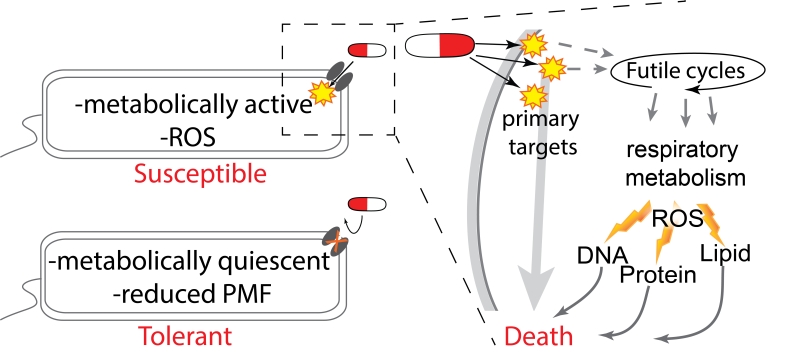FIGURE 1: A model relating the impact of respiratory metabolism on bactericidal toxicity. Metabolically quiescent cells are tolerant to antibiotics whereas metabolically active bacteria are more susceptible. In metabolically active cells bactericidal antibiotics interact with their primary targets to directly induce toxicity. In addition to direct toxicity this initial target dependent damage also leads to the elevation of respiratory activity through the induction of futile metabolic cycles and other mechanisms. Elevated redox metabolism leads to elevated oxygen consumption and induction of ROS production as both a metabolic byproduct and as a result of disordered respiratory activity. ROS and other oxidants then damage cellar components such as DNA, protein and lipids and thereby contribute to bacterial death.
By continuing to use the site, you agree to the use of cookies. more information
The cookie settings on this website are set to "allow cookies" to give you the best browsing experience possible. If you continue to use this website without changing your cookie settings or you click "Accept" below then you are consenting to this. Please refer to our "privacy statement" and our "terms of use" for further information.

